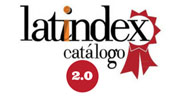Influencia de las variables climatológicas sobre la conexión inalámbrica: Base Emisora-Receptora
DOI:
https://doi.org/10.29019/enfoqueute.v7n4.116Palabras clave:
Clasificación supervisada, climatología, atenuación de la señal, reglas difusasResumen
El presente trabajo de investigación se realiza con el objetivo de encontrar la relación queexiste entre las condiciones climatológicas y la pérdida de la conexión inalámbrica en baseterrena. Los datos son suministrados por un centro de meteorología radicado en la zona y unaempresa de telecomunicación que opera en el mismo lugar. Se estudia directamenteclasificadores basados en reglas difusas debido a lo fácil que resulta la interpretación de lasreglas y manejo de los datos. Para este proceso se utilizó la aplicación informática Keel queofrece técnicas de clasificación supervisada y aplicación Weka para el pre procesamiento dedatos. Se estudiaron nueve clasificadores basados en reglas difusas donde el Furia-C fue elque mejores resultados obtuvo en cuanto a cantidad de reglas y a la precisión de clasificación.Algunas de las reglas obtenidas corroboran la influencia que tiene la lluvia fuerte sobre lapérdida de la señal, pero aparecen otras variables relacionadas con la perdida de la señal, queincorporan nuevos conocimientos en el área, como por ejemplo la influencia del punto de rocíoy la humedad relativa media.
Descargas
Referencias
Del Jesús, M. J., Hoffmann, F., Navascués, L. J., & Sánchez, L. (2004). Induction of fuzzy-rule-based classifiers with evolutionary boosting algorithms. IEEE Transactions on Fuzzy Systems, 12(3), 296-308.
Fermín, J. R., & Simancas, M. (2010). Pronóstico de la atenuación por lluvia en las comunicaciones satelitales mediante métodos de regresión. Télématique: Revista Electrónica de Estudios Telemáticos, 9(3), 23-35.
Gao, Q., & He, N. B. (2016). Study on Fuzzy Classifier Based on Genetic Algorithm Optimization. In Proceedings of the 5th International Conference on Electrical Engineering and Automatic Control (pp. 725-731). Springer Berlin Heidelberg.
González, A., Pérez, R., Caises, Y., & Leyva, E. (2012). An efficient inductive genetic learning algorithm for fuzzy relational rules. International Journal of Computational Intelligence Systems, 5(2), 212-230.
Hühn, J., & Hüllermeier, E. (2009). FURIA: an algorithm for unordered fuzzy rule induction. Data Mining and Knowledge Discovery, 19(3), 293-319.
Mansoori, E. G., Zolghadri, M. J., & Katebi, S. D. (2008). SGERD: A steady-state genetic algorithm for extracting fuzzy classification rules from data. IEEE Transactions on Fuzzy Systems, 16(4), 1061-1071.
Moncada, D. (2006). Efectos de Atenuación por Lluvia en los Medios de Transmisión entre Sistemas Satelitales y Estaciones Terrestres. Trabajo de grado para optar al Título de Magíster en Telemática. Universidad Rafael Belloso Chacín. Maracaibo, Venezuela.
Murcia, C., Bonilla, G., & Melgarejo, M. (2014). Fuzzy Classifiers Tuning Through an Adaptive Memetic Algorithm. IEEE Latin America Transactions, 12(2), 197-204.
Sánchez, L., Couso, I., & Corrales, J. A. (2001). Combining GP operators with SA search to evolve fuzzy rule based classifiers. Information Sciences, 136(1), 175-191.
Sánchez, L., Couso, I., & Corrales, J. A. (2001). Combining GP operators with SA search to evolve fuzzy rule based classifiers. Information Sciences, 136(1), 175-191.
Sudha, M. (2017). Intelligent decision support system based on rough set and fuzzy logic approach for efficacious precipitation forecast. Decision Science Letters, 6(1), 95-106.
Xie, Z., Jiang, L., Ye, T., & Li, X. (2015). A synthetic minority oversampling method based on local densities in low-dimensional space for imbalanced learning. In International Conference on Database Systems for Advanced Applications (pp. 3-18
Publicado
Número
Sección
Licencia
Los autores retienen todos sus derechos (© copyright).
- Los autores retienen sus derechos de marca y patente, y también sobre cualquier proceso o procedimiento descrito en el artículo.
- Los autores retienen el derecho de compartir, copiar, distribuir, ejecutar y comunicar públicamente el artículo publicado en Enfoque UTE (por ejemplo, colocarlo en un repositorio institucional o publicarlo en un libro), siempre que se dé el reconocimiento de su publicación inicial en la revista Enfoque UTE.
- Los autores retienen el derecho a hacer una posterior publicación de su trabajo, de utilizar el artículo o cualquier parte de aquel (por ejemplo: una compilación de sus trabajos, notas para conferencias, tesis, o para un libro), siempre que indiquen la fuente de publicación (autores del trabajo, revista, volumen, número y fecha).
























